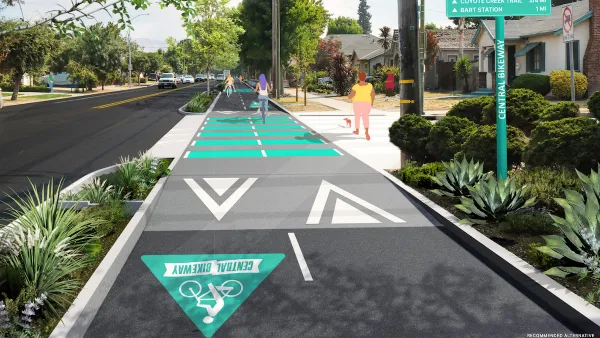The company formerly known as Facebook’s once planned to revive the Dumbarton Rail Bridge across the San Francisco Bay. Those plans are as derelict as the bridge.

Starting in 2017, Facebook explored a rebirth of the Dumbarton Rail Bridge, the portion of the 18-mile Dumbarton Rail Corridor that passes over the San Francisco Bay, connecting Menlo Park and Redwood City on the west side of the bay to Newark and Union City to the east. Between 2017 and 2020, Facebook spent $20 million on plans to revive the corridor. An estimate published in 2020 targeted the corridor for operation in 2028.
The pandemic changed the equation of explosive growth that defined the San Francisco Peninsula in the previous decade, according to an article by Issie Lapowsky for the New York Times. The plan is now defunct, reports Lapowsky: “Facebook’s employees went home. Traffic died out, and the future of offices themselves became uncertain. Before long, Facebook abandoned its plans for the railroad.”
According to the article, however, the project was always unlikely and signs of the pan’s demise were obvious long before the pandemic came to American shores. “But the story of how Facebook nearly catalyzed one of California’s most transformative infrastructure projects in a generation is a case study in how fast-growing tech giants have sought to radically shape the communities where they’re based and how local governments, starved for resources, have hungrily accepted the help.”
The source article, linked below, includes more details about the history of the bridge, it’s failed original intentions to solve traffic by providing an alternative passenger rail corridor across the bay, and the recent hopes by local leaders for the bridge’s revival.
FULL STORY: Facebook’s Bridge to Nowhere

Planetizen Federal Action Tracker
A weekly monitor of how Trump’s orders and actions are impacting planners and planning in America.

Silicon Valley ‘Bike Superhighway’ Awarded $14M State Grant
A Caltrans grant brings the 10-mile Central Bikeway project connecting Santa Clara and East San Jose closer to fruition.

Amtrak Cutting Jobs, Funding to High-Speed Rail
The agency plans to cut 10 percent of its workforce and has confirmed it will not fund new high-speed rail projects.

California Set to Increase Electric Truck Chargers by 25%
The California Transportation Commission approved funding for an additional 500 charging ports for electric trucks along some of the state’s busiest freight corridors.

21 Climate Resilience Projects Cancelled by the EPA
The federal government has pulled funding for at least 21 projects related to farming, food systems, and environmental justice to comply with one of Trump’s early executive orders.

Trump Executive Order on Homelessness Calls for Forced Institutionalization
The order seeks to remove legal precedents and consent decrees that prevent cities from moving unhoused people from the street to treatment centers.
Urban Design for Planners 1: Software Tools
This six-course series explores essential urban design concepts using open source software and equips planners with the tools they need to participate fully in the urban design process.
Planning for Universal Design
Learn the tools for implementing Universal Design in planning regulations.
Yukon Government
Caltrans
New Jersey Institute of Technology
Mpact (founded as Rail~Volution)
City of Camden Redevelopment Agency
City of Norman, Oklahoma
City of Portland
City of Laramie





























